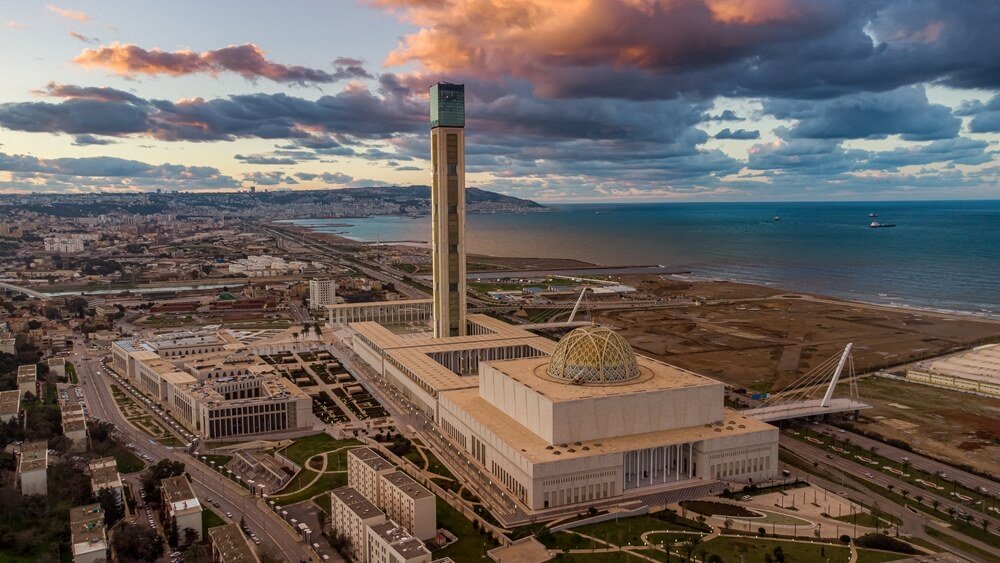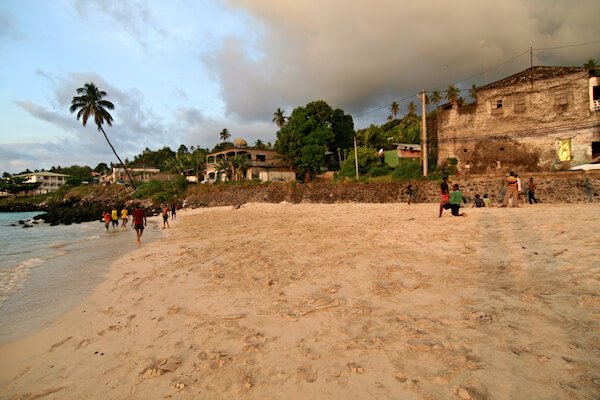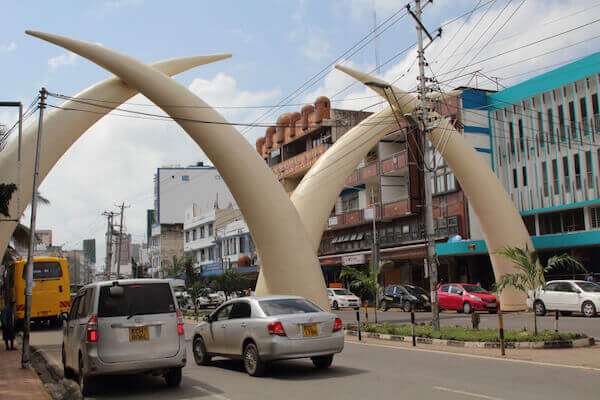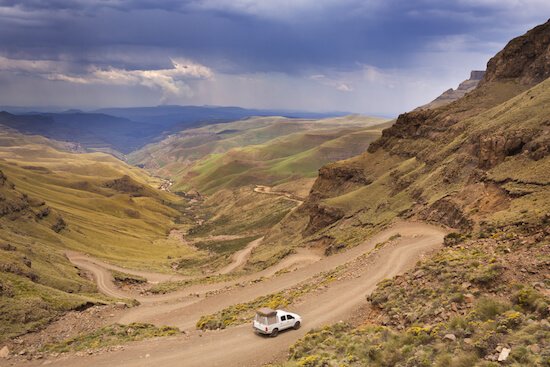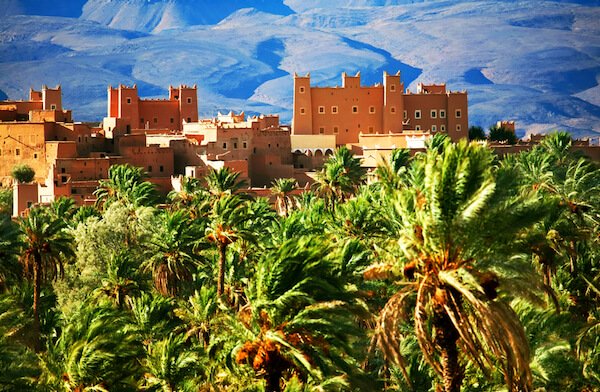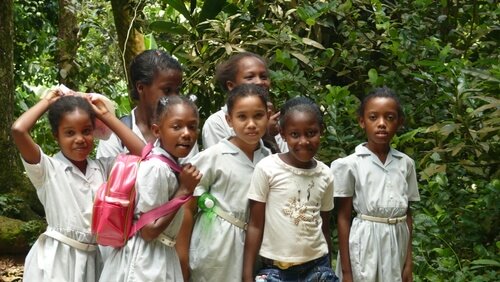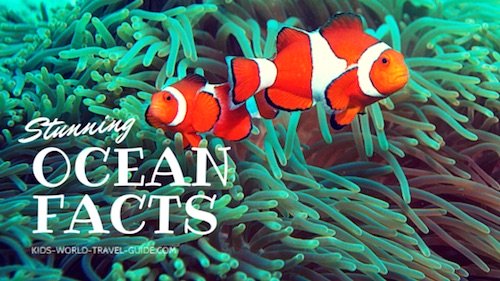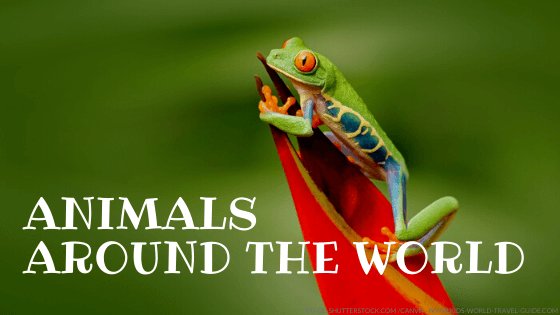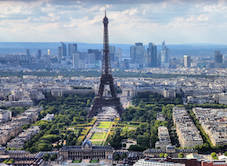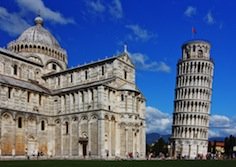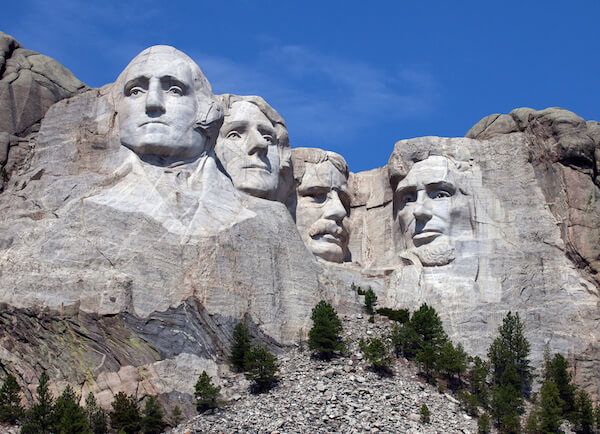Facts about Ethiopia
Ethiopia for Kids
Here we share fascinating facts about Ethiopia, Ethiopian superlatives and Ethiopian "firsts" that are marvellous and astonishing. This East African country has some amazing sights, awesome people and wonderful stories to tell!
1. Ethiopia is the most populous landlocked country in the world. More than 132 million people live in Ethiopia in 2024, making the country the second most populous African country after Nigeria.
 Impressions of Ethiopia
Impressions of Ethiopia2. Ethiopia is one of four countries located at the Horn of Africa - the other three countries are Somalia, Eritrea and Djibouti.
3. Ethiopia borders six countries: Eritrea, Djibouti, Somalia, Kenya, Sudan and South Sudan and it is is the fourth largest landlocked country in Africa - after Chad, Niger and Mali.
 Ethiopian countryside near Lalibela
Ethiopian countryside near Lalibela4. Ethiopia is the tenth largest country of the 54 African countries and it is roughly twice the size of Texas/ USA. It is four times as big as the UK or as big as the land area of France and Germany combined.
5. Facts about Ethiopia: Addis Ababa is the highest lying capital city in Africa at 2,355 m/ 7,726 ft. and the fourth highest capital city in the world after the South American cities La Paz in Bolivia, Quito in Ecuador and Bogotá in Colombia. More than 5 million people live in Addis Ababa, the most populous city in Ethiopia.
 Addis Ababa is the highest lying capital in Africa
Addis Ababa is the highest lying capital in Africa6. Emperor Menelik II founded Addis Abeba in 1886 and made it capital city in 1889. The name of the city originates from the Amharic language and means 'new flower'.
7. The headquarters of the African Union are located in Addis Ababa and the city is often referred to as the 'political capital of Africa'.
 African Union Commission building in Addis Ababa
African Union Commission building in Addis Ababa8. Ethiopia was never formally colonised by a European country during the 'Scramble for Africa', that took place between 1870 and 1914. The British had removed King Theodore II from his throne in 1868, however, they never colonised the country. By 1914, Ethiopia and Liberia were the only independent states in Africa.
9. Ethiopia was named Abyssinia by the Italians who first unsuccessfully had invaded the country in 1893. In 1936, Ethiopia was proclaimed an Italian colony when Abyssinia together with Somalia and Eritrea formed Italian East Africa. This Italian colony only lasted until 1941 and is often not considered as longstanding colony.
 Statue of Menelik II who successfully combatted the Italians.
Statue of Menelik II who successfully combatted the Italians.10. Facts about Ethiopia: Ethiopia houses the highest number of world heritage sites in Africa considering only cultural sites. There are eight cultural sites and one natural site in Ethiopia according to the sites listed by UNESCO.
Among the eight UNESCO cultural sites in Ethiopia are the rock-hewn churches in Lalibela, the historic town of Harar, the ruins of Aksum, the fossil sites in the Lower Omo Valley and Lower Awash Valley as well as the fortress Fasil Ghebbi.
 Fasil Ghebbi
Fasil GhebbiFacts about Ethiopia | Geography
11. The kingdom of Aksum was the first to use the name of Ethiopia for its nation as early as in the 4th century. The city of Aksum, also spelt Axum, in northern Ethiopia was the centre of the kingdom as it was located on the main trade route between the Roman Empire and Ancient India.
12. The Aksumites erected huge stelae, which are monumental columns or made of granite. The highest of these columnns is 33 m/ 90 ft high. These stelae are stone towers or obelisks that were used to mark graves where they represent multi-story palaces and include false windows and doors.
 Stelae at Aksum
Stelae at Aksum13. The Blue Nile, called Abay river by the locals, is part of the world’s longest river Nile, and originates in Lake Tana in Ethiopia. The Blue Nile and the White Nile make up the two tributaries of the Nile River which has a total length of 6,650 km/ 4,130 miles.
Did you know that the northwards flowing Nile river passes eleven African countries until it enters the Mediterranean Sea? While the White Nile river is commonly regarded as the primary stream of the river, the Blue Nile is the source of more than 80% of the Nile’s water. The two rivers meet at Khartoum, the capital city of Sudan.
 Abay River Falls
Abay River Falls14. The Danakil Depression in Ethiopia is the hottest inhabited place on the planet regarding the average temperature all year round. There the annual average temperature is 41 °C/ 105 °F and recordings for June, which is the hottest month, even list average temperatures over 46 °C/ 116 °F!
15. The Danakil Depression is also known for one the lowest points on Earth. The Dallol sulfur springs featuring a multicoloured salt lake made up of various minerals are located at 125 m/ 410 ft. below sea level.
 Sulfur lakes at Danakil Depression
Sulfur lakes at Danakil Depression16. There are about 60 volcanoes in Ethiopia's rift valley. Erta Ale is the most active volcano in Ethiopia and last erupted in 2017. Erta Ale’ s name originates from the Afar language and means 'smoking mountain'.
17. Ethiopia’s lava lake at Erta Ale volcano is the longest existing lava lake in the world as it formed in 1906 and still exists. There are only eight persisting lava lakes in the world that contain molten lava for such a long time. Erta Ale lava lake is located in the Afar region of the East African Rift valley.
 Erta Ale Lava Lake
Erta Ale Lava LakeFacts about Ethiopia | People
18. There are about 80 different ethnic groups in Ethiopia among them the Oromo, Amhara, Tigrinya and the Afar. The largest group are the Oromos who are mainly farmers and herders. There are over 80 languages and more than 200 dialects spoken by the Ethiopian population.
19. Amharic and Oromo are the most commonly spoken languages in Ethiopia. Amharic is the official language and main working language in Ethiopia and thus spoken by the vast majority of people in Ethiopia.
 People in Ethiopia - images by Shutterstock.com
People in Ethiopia - images by Shutterstock.com20. Amharic is the only language in the world that uses an ancient indigenous alphabet. The alphabet is named fidel and is based on a writing system called Ge’ez, that is based on a combination of several languages of the region.
Amharic is written from the left to the right similar to English. The Ethiopian alphabet does not have letters but characters. Written Amharic also has different punctuation symbols such as these:
The text below is taken from Article 1 of the Universal Declaration of Human Rights:
21. Ethiopia is often considered as the birthplace of humankind, as some of the most important fossil discoveries have been made in the country.
 Great Rift Valley in Ethiopia
Great Rift Valley in EthiopiaThe oldest fossil bones belonging to one of the Great Apes, a female early human called Ardi, were found in 1994 near the Awash river. Ardi is together with the Lucy skeleton one of the most complete early human ancestor skeleton that was ever discovered. Ardi’s fossil bones are more than 4.4 million years old.
22. Lucy's 3.2 million year old remains were discovered in the Afar region in northern Ethiopia in 1974. Locals refer to the female hominid Lucy as 'Dinkinesh' which means 'You are marvellous' in Amharic or 'Heelomali' which means 'You are special' in the Afar language.
 Dinkinesh - the oldest 'human' fossil bones
Dinkinesh - the oldest 'human' fossil bones23. Ethiopia is the country in Africa with the lowest income-inequality, however, it is still one of the poorest countries in the world. This means that although the difference in percentage of rich and poor people in Ethiopia is very small, there are many people who live in extreme poverty, which is mainly due to rapid population growth and natural disasters such as droughts and locust invasions affecting the livelihood of the people in the region.
24. After Uganda, Ethiopia hosted the second largest number of refugees in Africa in 2023. This includes more than 966,000 people from 26 countries, most of them come from these three main countries: South Sudan, Somalia, and Eritrea. Almost 60% of the refugees in Ethiopia are children and teenagers or younger than 18 years.
Additional to the high number of refugees, Ethiopia also houses more than one million displaced Ethiopians who had to flee their homes due to unrest, poverty or natural disasters.
Facts about Ethiopia | Economy
25. Coffee was first grown and planted on the fertile plateau in the region around Harar in Eastern Ethiopia. Coffee was first exported from there in the 15th century. Today, Ethiopia is the largest coffee producer in Africa and fifth largest in the world.
 Coffee beans
Coffee beansA local legend tells that coffee was first discovered by an Ethiopian goat herder called Kaldi in the 9th century - long before coffee was first enjoyed in Yemen and the Middle East. The boy reported that his goats seemed very excited and did not sleep after they had eaten the berries from a special tree. Another Arabic legend tells of travels of Omar, a famous Arab healer who by chance found that the berries from the coffee bush make a wonderful tonic when roasted and put in hot water, but that the coffee berries cannot be eaten raw.
 Afar woman serving coffee to visitors
Afar woman serving coffee to visitors26. Ethiopia is one of the fastest growing economies in the world. In 2020, it is ranked among the top ranking African countries such as Rwanda, Tanzania and Ghana in terms of growth of the economy.
27. Ethiopian Airlines is the largest airline in Africa with a fleet of 125 aircrafts, highest number of passengers and destinations. Ethiopian Airlines is the world's fourth largest airline considering number of countries an airline serves - after Turkish Airlines, Air France, British Airways. Ethiopian Airlines serves more countries than Emirates, Lufthansa or American Airlines!
 Bole International Airport in Addis Ababa
Bole International Airport in Addis AbabaEthiopia currently is building and expanding its airport which is intended to become Africa's largest airport by 2028. Ethiopia became the first country in Africa, and the second in the world after Japan, to own and operate a Boeing 787 Dreamliner in 2012.
Facts about Ethiopia | Religion
28. Christianity and Islam are the two main religion in Ethiopia and both faiths co-exist for many hundred years in the country. Christianity arrived already during the empire of Aksum in the 4th century AD in Ethiopia. Even when Islam spread over most of northern Africa, Ethiopia remained a predominantly Christian society. Today, there are 63% Christians and 33% Muslims in Ethiopia.
 Priest holding ancient Ethiopian gospel book
Priest holding ancient Ethiopian gospel book29. The Garima Gospels are considered as the oldest complete Christian gospel books. The manuscripts were written in the ancient Ethiopian Ge'ez language complete with decorations, borders and miniature images.
30. Ethiopia was also the first country to accept Muslims from Mecca who were persecuted there. Harar is regarded as the fourth holy city of Islam and has more than 80 mosques and 100 shrines.
 Mosque in Harar
Mosque in HararFacts about Ethiopia | Animals
31. Ethiopia has a varied wild life. The grass eating gelada monkeys are unique to Ethiopia and can be seen high up in the mountains in Simian National Park.
 Gelada Monkey in Simien National Park
Gelada Monkey in Simien National Park32. The Ethiopian wolf is one of the rarest canid species in the world and thus is critically endangered. A canid is a member of the dog family, of which there are 34 species. The Ethiopian wolf is often referred to as red fox or red jackal for the red and white fur. There are less than 500 Ethiopian wolves left in the world.
 Ethiopian Wolf in the Bale Mountains
Ethiopian Wolf in the Bale MountainsPopular Pages
Facts about Ethiopia: Resources
Resources for Facts about Ethiopia page:
- National Coffee Association USA. "The History of Coffee." NCAUSA.org Last accessed 13 August 2024.
- UN Refugee Agency. "Ethiopia Refugee Crisis Explained. UNHCR. 23 August 2023. Last accessed 13 August 2024
- AfricaCheck. "Yes, Ethiopia the fastest growing economy globally - but it's all in the details." AfricanReview.com. 17 December 2019. Last accessed 13 August 2024
- Simon Ager. "Amharic." Omniglot.com Last accessed 13 August 2024
- UNESCO. "Ethiopia's World Heritage Sites." UNESCO. Last accessed 13 August 2024
Image Credits on Facts about Ethiopia: by Shutterstock.com, wikicommons or sxc.hu if not otherwise stated. African Union commission building in Addis Ababa - image by Hailu Wudineh TSEGAYE/ Shutterstock.com; Statue of Menelik II in Addis Ababa/Ethiopia - image by Marek Poplawski/ Shutterstock.com; Blue Nile Falls with boy - image by Craig Schuler/ Shutterstock.com; Afar Woman preparing coffee - image by Piu Piu/ Shutterstock.com; Bole International Airport - image by EQRoy/ Shutterstock.com; Priest with bible - image by Kanokwann/ Shutterstock.com; Mosque in Harar - image by Vlad Karavaev/ Shutterstock.com
Facts about Ethiopian people - collage: Omo Valley - Young Mursi boy - image by Nick Fox/ Shutterstock.com; Ethiopian Girl with big haircut - image by Anton Ivanov/ Shutterstock.com; Oromo Grandmother - image by Sarine Arslanian / Shutterstock.com; African mother with baby - image by Sunshine Seeds/ Shutterstock.com; Ethiopian worker - image by Anton Ivanov/ Shutterstock.com; Ethiopian girl with orange clothes - image by Anton Ivanov/ Shutterstock.com, Dasanesh girl with goat - image by Nick Fox/ Shutterstock.com, Two little boys - image by Anton Ivanov/ Shutterstock.com
Facts about Ethiopia top image: Aksum woman - image by Oscar Espinosa/ Shutterstock.com; Lalibela rock-hewn church - image by Oscar Espinosa/ Shutterstock.com
Competition Winners 2024
Competition Winners 2023
We hope you enjoyed reading our Facts about Ethiopia. Many thanks to our reader Temesgen Tsegaye for his input and local knowledge. Do you want to share your insights too? Please contact us here.
***
More about Ethiopia
More Countries in Africa
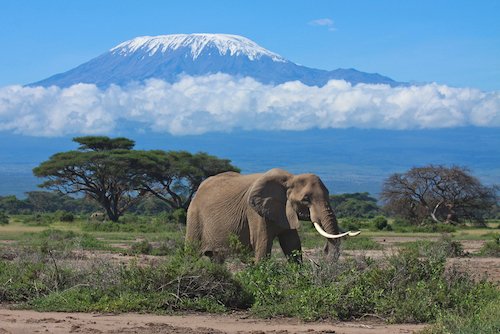 Tanzania
TanzaniaLike what you read?

|
Simply share the html code below. Copy and paste onto your website, blog or Facebook page: <a href="https://www.kids-world-travel-guide.com/facts-about-ethiopia.html">Kids World Travel Guide: Facts about Ethiopia</a> |






















